Foot Bursitis SymptomsThe most recognizable sign of foot bursitis is swelling caused by the enlargement of the bursa. This swelling is the build up of excess fluid in the bursa.  When you suffer from bursitis you will usually feel pain in the area of the inflamed bursa. If tendonitis is also present, the pain can radiate away from the bursa. Direct pressure on an inflamed bursa will exacerbate the pain and should be avoided if possible. As the bursa becomes more inflamed you will experience swelling and warmth. In severe cases the bursa will appear as a bump and is usually red, appearing extremely tender and painful. Swelling can cause difficulties moving your toes, foot, or ankle as the range of motion in the joints of you foot be affected. You may also experience weakness in the tendons and muscles surrounding the bursa as the pain worsens and the inflammation in the area spreads. It is important to treat bursitis in the early stages to reduce the symptoms, minimize damage and maintain motion and strength in your foot. Resting your foot, using proper cushioning and comfortable footwear, and reducing any activities that add pressure on your bursa will help to reduce your pain and bursitis inflammation. When at rest, the fluid in the bursa decreases, helping to relieve the pressure and pain. By treating your foot bursitis in the early stages with a Cold Compress or Ice Pack and a TShellz® Circulatory Boost Wrap, you are more likely to prevent long-term damage and chronic conditions from setting in. Foot and Ankle Bursitis Treatments Relieving the symptoms of bursitis initially focuses on taking the pressure off the bursa. This can be done with proper cushioning, inserts, or footwear but may require surgery if it is a bone formation problem (i.e. Haglund's Deformity). If your bursitis is caused by an infection (septic bursitis), the doctor will probably drain the bursa sac with a needle and prescribe antibiotics to treat the infection. For non-infectious bursitis, the preliminary treatment starts with non-operative options such as cold and TShellz Wrap® treatments (once swelling has reduced). Surgery to remove the inflamed bursa is normally not required for bursitis, however if you fail to see improvement with the conservative treatments, your physician may recommend surgery to remove the bursa completely. Although this removes the problem of an inflamed bursa, you are left with less cushioning in your joint which can lead to a host of other conditions. The most important factor in healing bursitis is resting your foot and ankle. This can be difficult when you have to carry on with daily activities, but resting and elevating your foot whenever you can is recommended. During your recovery you will probably have to modify or avoid the activities that stress your bursa until your pain and inflammation settle. Treatments should involve decreasing swelling, relieving pain and stress on the foot or ankle, correcting any bio-mechanical dysfunction (over-pronation or flat feet), treating scar tissue, and then restoring strength and movement. If you are performing an activity that could cause further trauma to the bursa, it is recommended that you protect the area with padding and/or proper footwear to prevent further irritation or damage. Product Advisors are available 9:00 am to 5:00 pm Eastern Standard Time Monday to Friday. Learn More About Bursitis Injuries & TreatmentsI want to learn more about Post-Surgery Recovery I want to learn more about TShellz Wrap® Circulatory Boost I want to learn more about Ice & Heat: Which Is Better For Treatment? I want to learn more about Bursitis Treatments I want to learn more about Bursitis Surgery FREE SHIPPING ON ALL PRODUCTS CURRENTLY ENABLED | 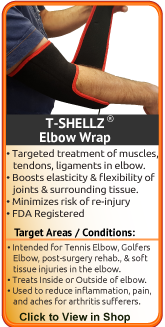  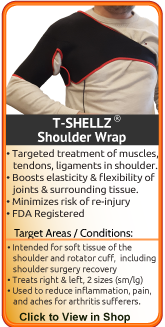 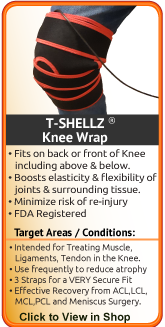 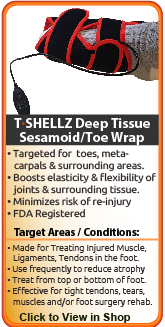 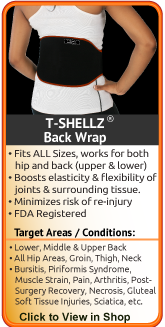 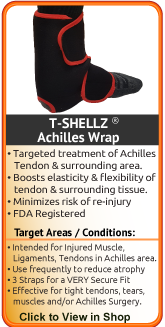 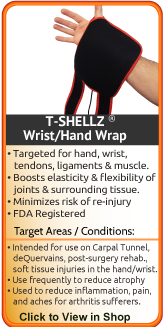 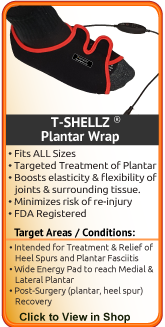  |